Originally published on SoundStage! Xperience
AudioQuest Nighthawk measurements can be found by clicking this link.
I couldn’t even guess how many companies have gotten into the headphone business since 2010, but I doubt any has done it so boldly as has AudioQuest. Their NightHawks ($599 USD) are the result of a from-the-ground-up effort to improve headphone sound. In fact, so much about the NightHawks is radically different that I mention here only their most important features; if you want an in-depth explanation, AudioQuest has devoted to them an excellent microsite.
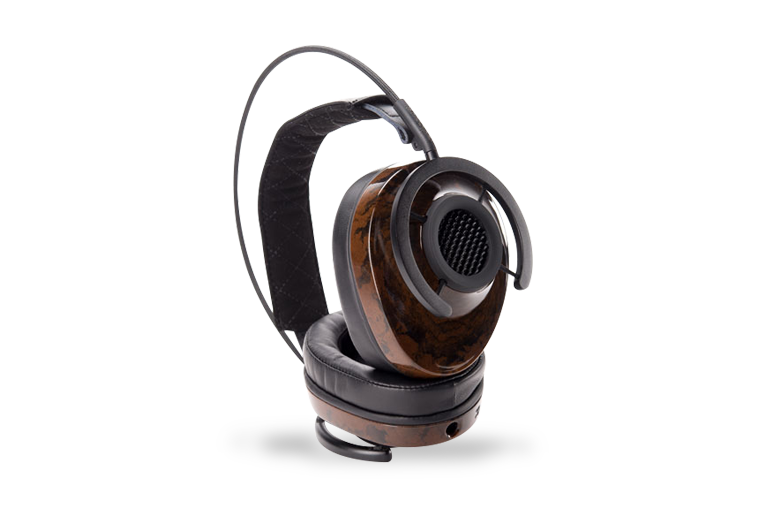
The backs of the NightHawks are molded from liquid wood: a mix of resins and natural fibers that combines the design flexibility of plastics with the natural vibration-damping qualities of wood. The inside is coated with an elastomer to further reduce vibration. The backs are semi-open, but instead of covering the opening with the usual metal or plastic grille, AudioQuest uses a tiny diffuser to prevent the grille from reflecting sound back toward the driver.
That driver is just as innovative. Most headphones use dynamic drivers with a Mylar diaphragm. Unlike conventional speaker drivers, these typically have no surround (the part that attaches the diaphragm to the basket or frame), and the voice coil is not wound around a separate cylinder or former. The NightHawks’ drivers are built more like a regular speaker driver, with a diaphragm of bio-cellulose (a fiber-based material), and an actual rubber surround and cardboard voice-coil former. According to AQ,
Mylar is inherently flimsy and brittle, typically distorting as the audio signal reaches high frequencies of 6-10kHz. . . . Listeners who are accustomed to the sound of Mylar may initially think it offers more high-frequency “detail,” when, in fact, these perceived details are the direct result of distortion and artificially boosted highs.
Those last three words tip you off to the NightHawks’ other major difference: Their measured frequency response is flatter than most headphones’, which have a boost somewhere between 2 and 4kHz, typically on the order of +6 to +16dB (the norm is +12dB). Generally speaking, such a response is thought to mimic the sound of a loudspeaker that has a flat frequency response in a good listening room. Again, quoting AudioQuest:
Under normal listening conditions, the flagship headphone [here AudioQuest means an unnamed headphone voiced according to existing standards] will draw attention to the upper-midrange and treble elements of the audio signal, perhaps resulting in the perception of greater “sparkle” or detail -- but at the expense of midrange articulation, bass control and impact, and ultimate extension.
I can’t quote these statements without comment. Regarding distortion: In the last four years I’ve measured the total harmonic distortion vs. frequency at different signal levels of 123 over-ear or on-ear headphones with dynamic drivers, and I’ve conducted or participated in listening panels that have tested several hundred headphones. Except in a couple of extreme cases, I’ve found little correlation between measured distortion and listener preference. My experience seems to be similar to the results of the testing described in Audio Engineering Society Convention Paper 9118, “The Correlation Between Distortion Audibility and Listener Preference in Headphones,” cowritten in 2014 by Steve Temme (of Listen, Inc.) and Sean E. Olive (of Harman International). As of this writing, the only evidence AudioQuest has presented of the prevalence of distortion in other manufacturers’ headphones is a graph on the NightHawks website showing the distortion measurements of the unnamed “flagship headphone” mentioned in the quote above.
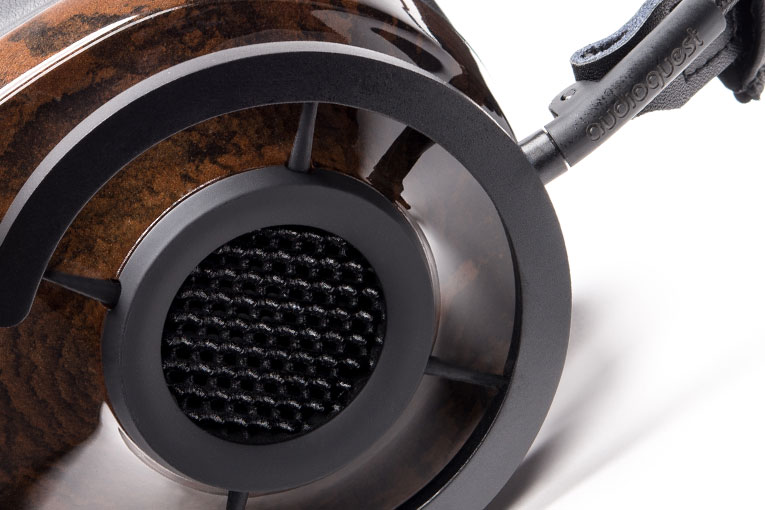
Regarding the NightHawks’ flatter frequency response: The lower-treble (2-4kHz) boost incorporated into the diffuse-field tuning used in most of today’s headphones remains controversial -- it is far from settled science. Recent AES papers produced by Harman International suggest that headphones with no lower-treble peak, or a milder treble peak, sound better to most listeners in blind tests. And I completely share AudioQuest designer Skylar Gray’s disdain for audiophile headphones that fake detail by boosting the treble. However, the Harman tests conclude that listeners preferred headphones with a “measured target response that simulated the in-room response of an accurate loudspeaker calibrated in a reference listening room.” Gray has a different philosophy: “Rather than attempting to recreate the loudspeaker-listening experience through a set of headphones, I’ve judiciously incorporated elements of loudspeaker design that honor the headphone-listening experience.”
There are some aspects of the materials presented on the NightHawks microsite that make complete technical sense, and some that don’t square with my experience or with any published research I’ve seen. But, as always with audio, the proof of the pudding is in the tasting. Or, to put it more precisely, all that ultimately matters is whether or not the listener digs the sound.
In the box
As you’d expect, the NightHawks are equipped with AudioQuest cables -- two, in fact. In one, fabric covers the separate leads for the left and right earpieces. The other, slimmer one is intended for use while traveling. The weird thing is that both cables are 8’ long, and both are tipped with 3.5mm miniplugs. (The larger cable is fitted with a 3.5mm-to-1/4” adapter.) Neither comes with an inline microphone or remote, but that’s the norm with audiophile headphones. By special order, the NightHawks are also available with a balanced cable, with separate grounds for the left and right drivers.
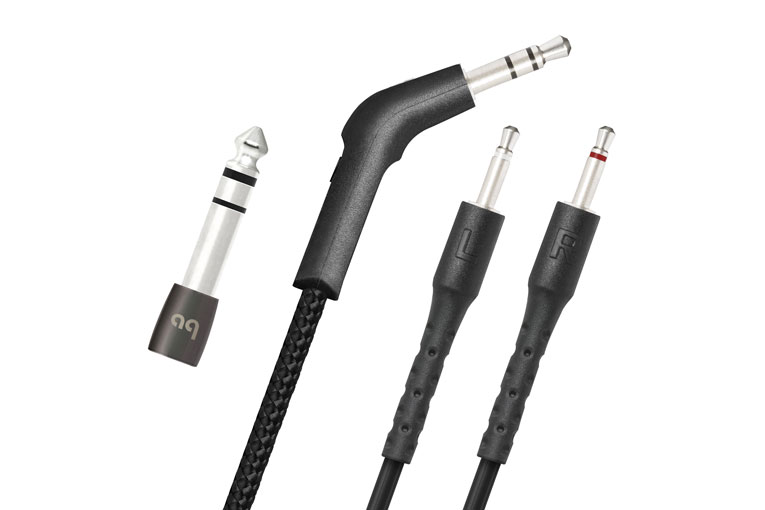
The NightHawks come in a very nice carrying case of padded leatherette that also holds a microfiber polishing cloth, a manual, and an offer for a free month’s subscription to the Tidal streaming service.
Use
Because the NightHawks are a semi-open-back design, I didn’t expect them to offer much isolation from external sounds -- but they seemed to do a pretty good job in this regard. To see how good their isolation really was, I took them for a trip on the Los Angeles Metro, riding the Orange Line bus and the Red Line subway to downtown and back. They seemed to give me about as much isolation as a typical set of closed-back headphones. Even when I used as a source my Samsung Galaxy S6 smartphone, I got a reasonable amount of volume. I was shocked.
I was also surprised that, by the time I got downtown, a trip of about 90 minutes, I felt not the slightest bit of discomfort. Most headphones get a tad uncomfortable by the time I transfer from the Orange to the Red line, about 45 minutes into the trip. I could have worn the NightHawks all day. They might be the most comfortable headphones I’ve ever used.
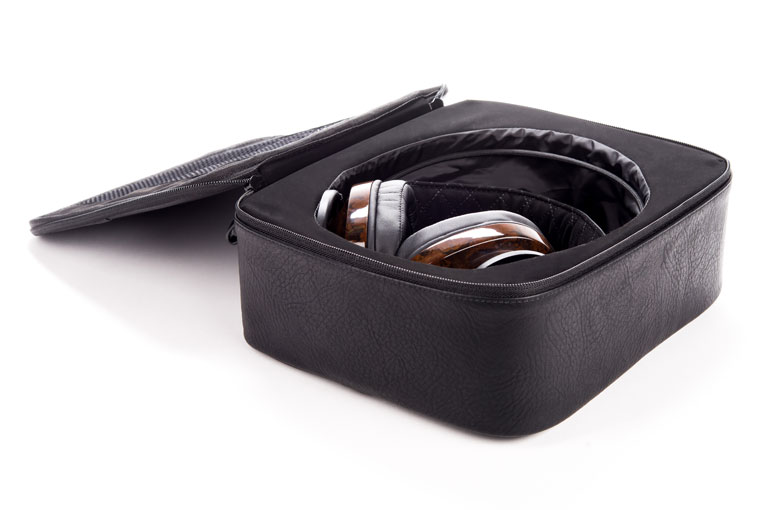
The NightHawks may not be designed for portable use, but I still wish AudioQuest would shorten their skinny cable to 3’. It was cumbersome to deal with as I juggled my murse, my Kindle, and my water bottle during my ride. (AudioQuest says it plans to offer a complete line of headphone cables in various lengths and with various connectors.) And I don’t know why anyone would care how a set of audiophile, home-use headphones look, but if you do, the NightHawks’ high-arcing headband makes them perhaps the dorkiest-looking ’phones I’ve worn. “It’s like you have a handle on your head that people could use to carry you around,” fellow reviewer Geoff Morrison remarked.
AQ stresses the importance of breaking in the NightHawks and their cables for 150 hours. Normally, I break in any headphones I review for ten hours, but I left my iPod Touch playing through the NightHawks for six days straight. AQ also suggests that listeners need time to become accustomed to these headphones’ low distortion. It seems to me that what takes getting used to are flaws, and that the benefits of removing artifacts such as distortion should be immediately evident. Still, before I did any focused listening, I used the NightHawks casually for about 20 hours, playing mostly pop tunes and jazz as I worked at my computer.
Sound: Take 1
I’ve put more time into this evaluation of the AudioQuest NightHawks than I have for any other headphones I’ve recently reviewed, because I found their premise and their performance fascinating.
Kenny Garrett’s classic Songbook (16-bit/44.1kHz WAV, Warner Jazz) was one of the first albums I listened to through the NightHawks, plugged into an Aurender Flow headphone amp-DAC. With “Brother Hubbard,” the entire sound seemed at first somewhat muffled, or at least less lively than I’m used to. Jeff “Tain” Watts’s snare drum gave a good, solid thump from the head, but not much snap from the snares. When he tapped out a steady rhythm on the bell of his big ride cymbal, the bell didn’t produce its characteristic ringing sound; it was more of a ting. Garrett’s alto sax, which normally sounds breathy and a little edgy, had more of the mellow tone of a Stan Getz. Headphones I compared the NightHawks to, such as the NAD Viso HP50 and HiFiMan’s HE400S models, produced clearer highs and a bigger sense of space.
However, having checked out the rest of Songbook and listened to another couple jazz albums, I noticed that the NightHawks were relaxing to listen to and had caused me no fatigue whatsoever. Is that the point? I wondered. Am I really just accustomed to bright-sounding headphones, and maybe these actually sound right?
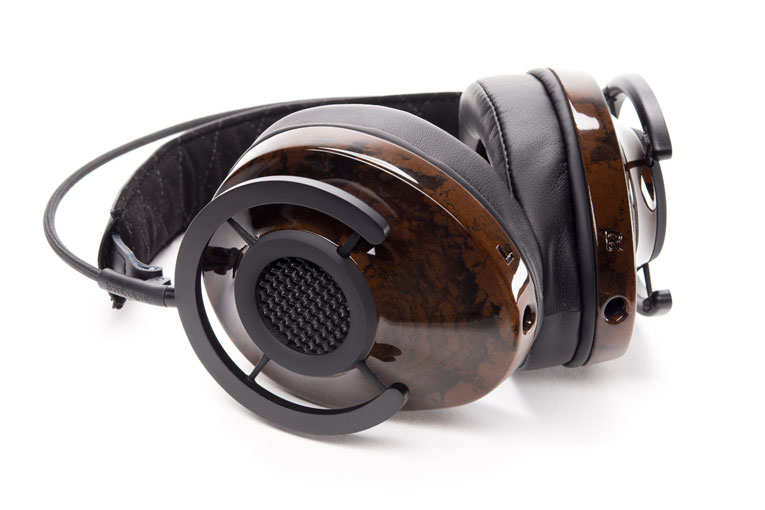
I decided to continue my listening with some of the test tracks I know best, some of which I’ve been using for more than 20 years. One of my favorites is “Rosanna,” from Toto’s IV (16/44.1 WAV, Sony) -- its dense mix so fills the audioband that within just a few bars you can get a good idea of how a system sounds. My notes about the NightHawks’ sound with “Rosanna” were almost the same as with the Kenny Garrett: I complained about lack of life and detail in the drums and voices. I also noted that the bass didn’t sound tight, and lacked the punch it has through the NAD Viso HP50s. But again, the sound wasn’t fatiguing, and was smoother than the sounds of the other headphones I tried.
James Taylor’s recording of “Shower the People,” from Live at the Beacon Theatre (DVD, 16/44.1 WAV digitally copied from the stereo track, Columbia Music Video), found me starting to appreciate Skylar Gray’s philosophy a bit more. The sound was relaxing and easy to listen to; I enjoyed it, even if I wouldn’t call it exactly high fidelity. But is that a criticism or a compliment? Taylor’s acoustic guitar sounded pretty if a tad mellow, and his voice was a bit bloated and muffled but also entirely free of harshness. Again, the other headphones had a more lively, spacious sound, but in this case the NAD Viso HP50s and Oppo Digital PM-3s sounded a little tizzy on Taylor’s voice.
After listening to Steely Dan’s Aja (16/44.1 WAV, Warner) with the other headphones, it was almost a relief to play it through the NightHawks. Each of the other models had a more spacious sound, but the NightHawks were simply more pleasant to listen to -- even if they made the cymbals kind of hard to hear, and killed some of the piano’s natural ambience.
Did the NightHawks sound more natural, or were they smoothing and softening the edges of the music? I still wasn’t sure. Then I thought of a way to find out.
Sound: Take 2
I’ve played my key test tracks through more than 1000 speaker and headphone models --- they give me some kind of a reference. I’ve spent plenty of time playing in musical groups (including, most recently, a weeklong jazz camp in July), so I have a pretty good idea of the sounds of real instruments played in real spaces. But no one’s memory is good enough to remember, days or weeks later, precisely how an instrument or an acoustical environment sounded. How could I be sure that my memory of what sounds “right” was right?
I could think of only one way. I enlisted the help of fellow reviewer Geoff Morrison in a surprisingly revelatory test.
I asked Geoff to bring over his acoustic guitar, sit in my living room, and play a simple chord sequence. I recorded his playing using my Earthworks M30 measurement microphone -- it has one of the flattest responses of any mike you can buy -- fed into my Tascam DR-40 portable digital recorder at 24-bit/96kHz. I then played the recording from the DR-40 through a Musical Fidelity V-Can headphone amplifier into four sets of headphones: the NightHawks ($599), the NAD Viso HP50s ($299), the Oppo Digital PM-3s ($399), and the HiFiMan HE400Ses ($299). (The NADs and Oppos are closed-back, the HiFiMans open-back.) I then asked Geoff to play the chord sequence live again before I listened to each of the four sets of headphones.
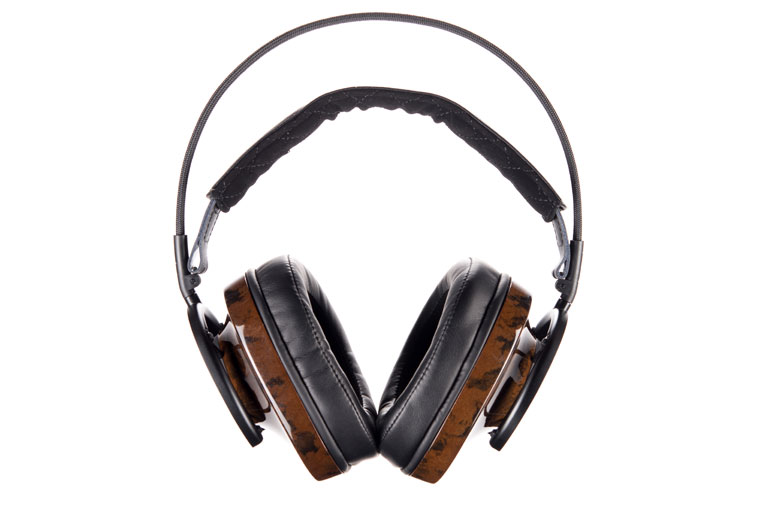
When I’d finished the listening, Geoff and I switched places. I repeatedly played the chords of the first eight bars of a hard-bop classic, Clifford Brown’s “Joy Spring,” on my Ohana Vita-Uke ukulele (fitted with a low G string for a fuller sound) while whistling the melody; Geoff recorded me, then went back and forth between the different headphones and my live playing. We then compared our impressions.
Geoff and I both felt that while the NightHawks had a slight constriction in the midrange that the NADs and Oppos didn’t, the AQs’ treble sounded more like the live performance; the highs of the NAD and Oppo models sounded exaggerated compared to either of us playing live. So it appears that AQ’s Skylar Gray may have a point, even when his headphones are compared with the NAD HP50s, which have a relatively mild peak between 2 and 4kHz. Geoff also felt that the NightHawks’ bass was the best balanced and most accurate sounding, but here we disagreed; I preferred the Oppo and HiFiMan models. However, we both felt that, in the midrange and treble, the open-back HiFiMan HE400Ses sounded much more like the live performance than did the other headphones.
Conclusion
This is a long and inconclusive review, but it almost has to be. If a reviewer raves about the AudioQuest NightHawks, he’s basically saying that all the other headphones on the market are wrong -- and so are all the rave headphone reviews he’s written in the past. If he pans the NightHawks, he’s dismissing Gray’s contentions about headphone voicing, some of which almost certainly have technical merit -- especially considering the results of Geoff’s and my “live vs. Memorex” test.
It is indeed possible for one man to be right and a whole industry to be wrong. It happened in the early 1990s, when I was an editor at Video magazine (since folded into Sound & Vision). All TVs back then had very high color temperatures of about 9000 or 10,000 Kelvins, so they produced bright but bluish pictures. Manufacturers used to pride themselves on this, until a video expert named Joe Kane pointed out that TV shows and movies are produced on monitors calibrated to 6500 Kelvins, and thus consumer TVs were radically altering the look of the programs. Thanks to Kane’s work, almost every TV now has a mode calibrated at or near 6500 Kelvins, and almost all TVs include controls that allow technicians to easily calibrate them.
Is Skylar Gray the Joe Kane of headphones? Or yet another audio engineer with ideas too radical for anyone else to buy into?
I don’t know, but I’m eager to find out. What I can tell you is that, while there are a lot of things I like about the NightHawks, they wouldn’t be my first choice in headphones. Overall, I prefer the livelier sound I get from HiFiMan’s planar-magnetic models, among others. Does that reflect bias on my part? Or good taste in sound? I can’t say for sure, any more than I can say with any certainty that Gray’s ideas won’t eventually win me over.
There’s no contesting that the AudioQuest NightHawks are an extraordinary design with best-in-the-business comfort, and sonic isolation that I didn’t think possible from semi-open-back headphones. They’re also the product of a huge amount of knowledge, research, experimentation, and original thought. I don’t know if you’ll like them, but I do know that they deserve your audition. Fortunately, the website indicates that they’ll be available at many bricks-and-mortar dealers, so give ’em a listen. I’d love to hear what you think of them.
. . . Brent Butterworth
Associated Equipment
- Sources -- Tascam DR-40 digital recorder, Samsung Galaxy S6 smartphone
- Headphones -- NAD Viso HP50, Oppo Digital PM-3, HiFiMan HE400S and HE400i
- Headphone amp-DACs -- Aurender Flow, Musical Fidelity V-Can
AudioQuest NightHawk Headphones
Price: $599 USD.
Warranty: One year repair or replacement; one additional year with product registration.
AudioQuest
2621 White Road
Irvine, CA 92614
Phone: (800) 747-2770, (949) 585-0111
Fax: (949) 585-0333
Website: www.audioquest.com







